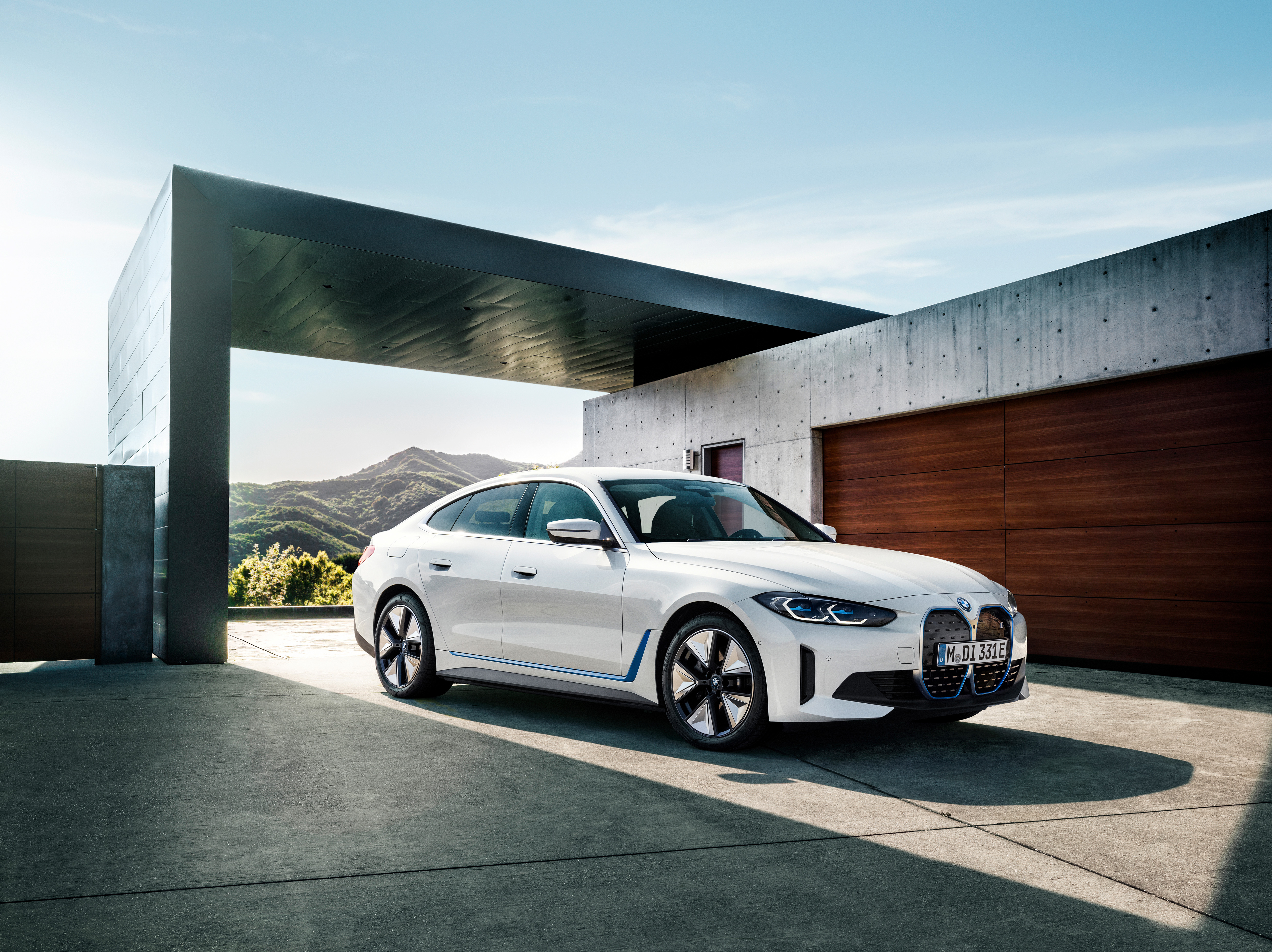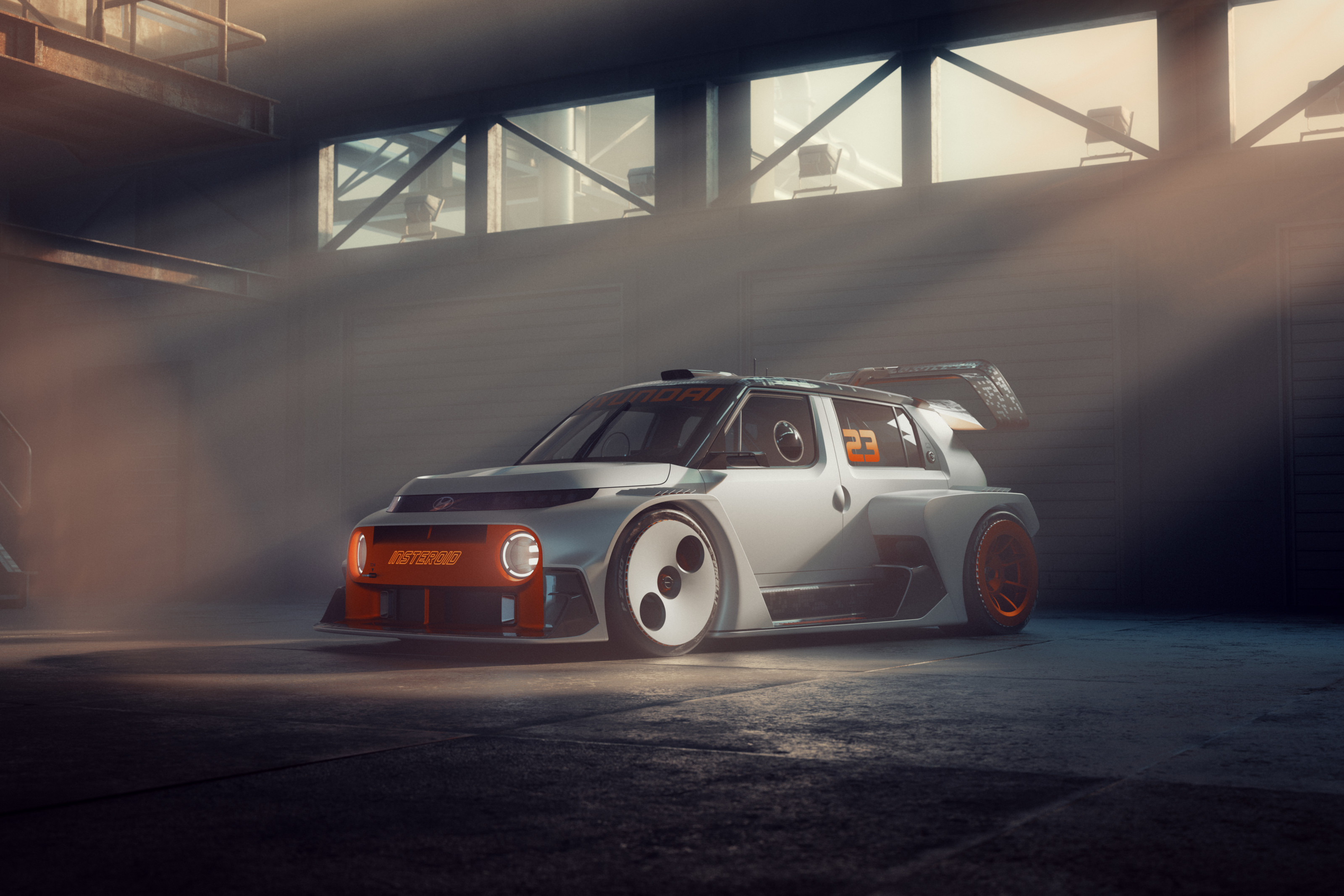New era for BMW electric cars, says design chief Domagoj Dukec
‘BMW i models are becoming the most relevant part of the brand,’ says the company’s head of design Domagoj Dukec, as he talks about a trio of new BMW electric cars, the iX3, i4 and iX, and what they mean for the future of the brand

The Croatian automotive designer Domagoj Dukec has been at the helm of BMW’s global design team since April 2019. Before this, he had overseen some of the BMW Group’s many sub-divisions, including time as chief designer at BMW i and BMW M. With responsibility for the Bavarian brand’s global design direction, he is at the heart of the action during a fevered period for the industry. We spoke to Dukec about the company’s newest models, a trio of pure electric cars, the new iX3, i4 and iX, and what they mean for the future of BMW.

Domagoj Dukec, head of BMW design
Wallpaper*: BMW was one of the pioneers of creating pure electric cars. How is BMW responding to the accelerating adoption of EVs around the world?
Domagoj Dukec: BMW is undergoing a ‘time of transformation’. The BMWi models are becoming more and more the most relevant part of the brand, especially in markets like China. Although the EV percentage of sales is still low, it is rapidly increasing. Our strategy was to make EVs very visible, then fold them into the main product line.
W*: Tell us about your newest models, the BMW iX3, i4 (showcased as a concept by Wallpaper* in 2020) and iX.
DD: We have two strategies. The BMW i4 and BMW iX3 are high-volume cars. People have wondered why the i4 and iX3 are not very progressive designs, like the original i3 or i8. An iX3 is for someone who wants an electric X3, while the i4 is at the very core of BMW, the three-box sedan. It brings everything together. It is a modern interpretation of the Neue Klasse 3-Series design.


The new BMW iX3 is an all-electric version of the X3 SUV
W*: These two models are closely related to their combustion engined equivalents. What about the BMW iX?
DD: The iX is a very different story. It is a pivotal product for a whole new way of thinking about car design. Our focus is more on the interior than the exterior. We invented the SUV segment with the X5, and then evolved it with the X6. But this is not a bold, bossy car like the original ‘X’ models. We wanted to see how the idea of X-ness will change and become more sustainable in the future. It’s a car for people who want to be different.
W*: How did you make the most of the advantages that an electric drivetrain offers?
DD: The interior space is better. BMWs are traditionally rear-wheel drive, which means an engine that intrudes into the cabin and a large transmission tunnel. The proportions have come to express a certain amount of status, one that you don’t get with the stance of a front-wheel drive. Although somehow it’s a bit dated now. It doesn’t offer as much space. Electric cars can have a flat floor and you get more space on the same footprint. It’s in line with our sustainable values. Cars aren’t getting bigger. But overall, proportions aren’t really changing. Aerodynamics don’t change, nor does human physiognomy.

The BMW iX is the company’s new electric flagship, a technology-filled, full-sized SUV that points to a new design direction
W*: Cars are getting heavier. How does BMW deal with this?
DD: You have to accommodate it. An EV weighs 300kg more than a combustion engine car. So you need more overhang for crash compensation – it’s just physics. Safety drives car design more than ever before because of this weight.
W*: What about new materials? The i3 and i8 had a pioneering use of carbon fibre.
DD: Our approach is always where to use the right material for the best performance. We tend to use carbon fibre on roof structures to keep the centre of gravity low. Steel for structure because it's strong and aluminium for panels that can be deformed.
Wallpaper* Newsletter
Receive our daily digest of inspiration, escapism and design stories from around the world direct to your inbox.

The dashboard of the 2021 BMW iX shows the influence of architecture and a minimal material palette
W*: How was the iX developed?
DD: It was very different to the Project ‘i' cars like i3 and i8. They were more like an internal start-up project, a new brand within BMW. The iX was produced and developed by exactly the same production team as our other cars, which was a challenge. For example, we reduced the amount of interior elements. We offer more by doing less. This ‘mono material’ approach shows more exclusivity than a traditional patchwork interior design, but it’s not what our teams are used to doing.
W*: What are your favourite elements of the interior?
DD: Our whole thinking was how to give the interior space a non-automotive feel. Of course, for safety reasons you can’t just make a lounge. The seats have to face forwards, there’s a steering wheel. But it is different. The way the screen is presented is like a television on a piece on furniture. All the functional elements, like the ventilation controls and seat adjustment buttons, are treated like items of jewellery. It’s a more philosophical approach. We’ve also mounted the iDrive controller on a wood console, because it feels human and natural. These touch points are important.

The BMW iX interior makes full use of the extra interior space created by the electric powertrain
W*: So will we see these features in future BMW models?
DD: The smart material approach, for sure. The iX is not like sitting in a fighter jet or a computer, it’s about using new technology to reduce complexity. Society has changing values and attitudes and BMW wants to reflect that. We want to be pioneering and responsible without compromising the emotional experience of our cars.
INFORMATION
Jonathan Bell has written for Wallpaper* magazine since 1999, covering everything from architecture and transport design to books, tech and graphic design. He is now the magazine’s Transport and Technology Editor. Jonathan has written and edited 15 books, including Concept Car Design, 21st Century House, and The New Modern House. He is also the host of Wallpaper’s first podcast.
-
 Extreme Cashmere reimagines retail with its new Amsterdam store: ‘You want to take your shoes off and stay’
Extreme Cashmere reimagines retail with its new Amsterdam store: ‘You want to take your shoes off and stay’Wallpaper* takes a tour of Extreme Cashmere’s new Amsterdam store, a space which reflects the label’s famed hospitality and unconventional approach to knitwear
By Jack Moss
-
 Titanium watches are strong, light and enduring: here are some of the best
Titanium watches are strong, light and enduring: here are some of the bestBrands including Bremont, Christopher Ward and Grand Seiko are exploring the possibilities of titanium watches
By Chris Hall
-
 Warp Records announces its first event in over a decade at the Barbican
Warp Records announces its first event in over a decade at the Barbican‘A Warp Happening,' landing 14 June, is guaranteed to be an epic day out
By Tianna Williams
-
 Mercedes-Benz previews its next-gen people mover with an ultra-luxury EV concept
Mercedes-Benz previews its next-gen people mover with an ultra-luxury EV conceptThe Mercedes-Benz Vision V Concept is an art deco picture palace on wheels, designed to immerse passengers in parallel worlds as they travel
By Jonathan Bell
-
 2025 Seoul Mobility Show report: all that's new and notable
2025 Seoul Mobility Show report: all that's new and notableOpened at a time of high national drama, the 2025 Seoul Mobility Show has gone on to underscore Korea’s place at the cutting edge of the auto industry. Guy Bird was there
By Guy Bird
-
 BMW celebrates half a century of its pioneering Art Car project with exhibitions and more
BMW celebrates half a century of its pioneering Art Car project with exhibitions and moreWe present a portfolio of the artists who have contributed to 50 years of BMW Art Cars, including Andy Warhol, John Baldessari, Jenny Holzer and David Hockney
By Jonathan Bell
-
 Meet the final drivable prototype of the Telo MT1 pickup truck, shaped by Fuseproject
Meet the final drivable prototype of the Telo MT1 pickup truck, shaped by FuseprojectThe Telo MT1 is a modestly scaled EV that turns the traditional all-American approach to pick-up truck design on its head
By Jonathan Bell
-
 EV start-up Halcyon transforms a classic 1970s Rolls-Royce into a smooth electric operator
EV start-up Halcyon transforms a classic 1970s Rolls-Royce into a smooth electric operatorThis 1978 Rolls-Royce Corniche is the first fruit of a new electric restomod company, the Surrey-based Halcyon
By Jonathan Bell
-
 Peruse the new BMW Group Archive to explore the evolution of BMW design over the decades
Peruse the new BMW Group Archive to explore the evolution of BMW design over the decadesFor lovers of the marque, BMW’s commitment to online archiving is second to none. The latest website from the Bavarian manufacturer is this extensive visual catalogue of 80 years’ worth of BMW design
By Jonathan Bell
-
 China’s Leapmotor pounces on the European car market with its T03 city car and C10 SUV
China’s Leapmotor pounces on the European car market with its T03 city car and C10 SUVLeapmotor’s tiny electric city car could be just the tonic for cramped urban Europe. We sample the T03 and its new sibling, the fully loaded C10 SUV, to see if the company’s value proposition stacks up
By Jonathan Bell
-
 Wallpaper* takes the wheel of the Bentley Blower Jnr for a rich automotive experience
Wallpaper* takes the wheel of the Bentley Blower Jnr for a rich automotive experienceHedley Studios has shrunk the mighty Bentley Blower into this all-electric, road-legal barnstormer. We take it to the streets of London
By Jonathan Bell